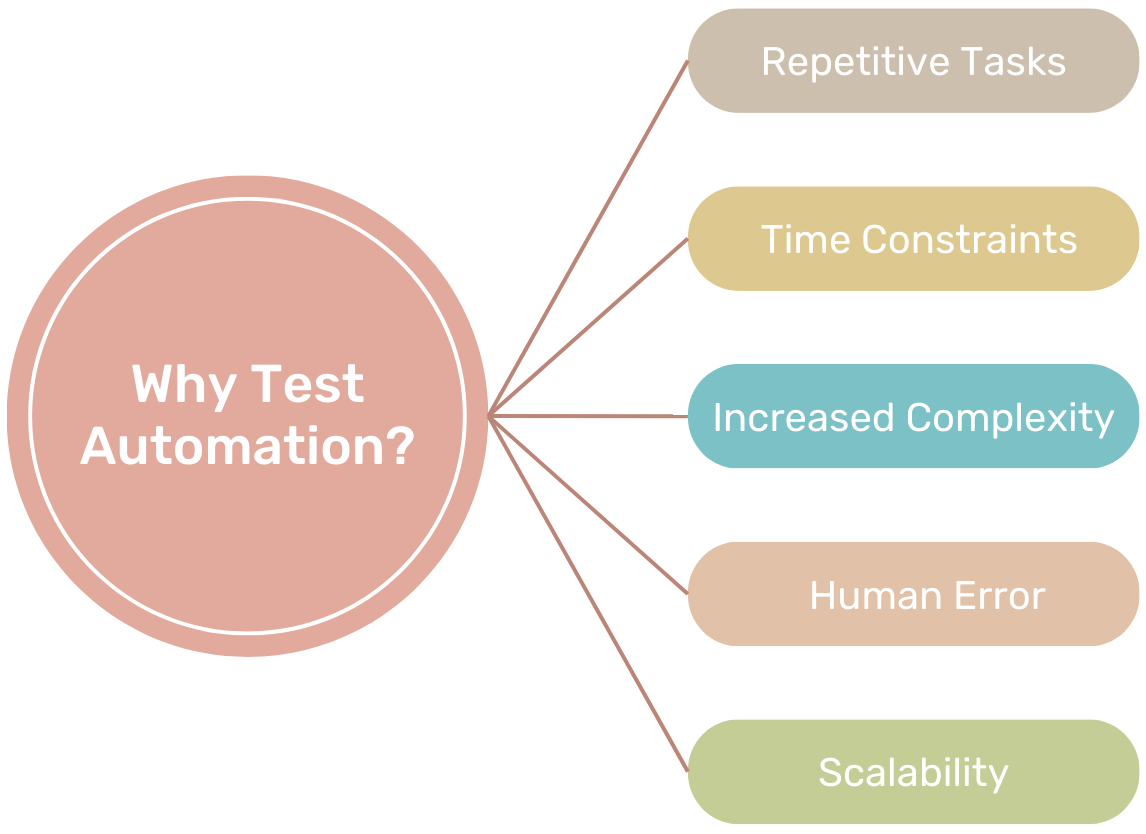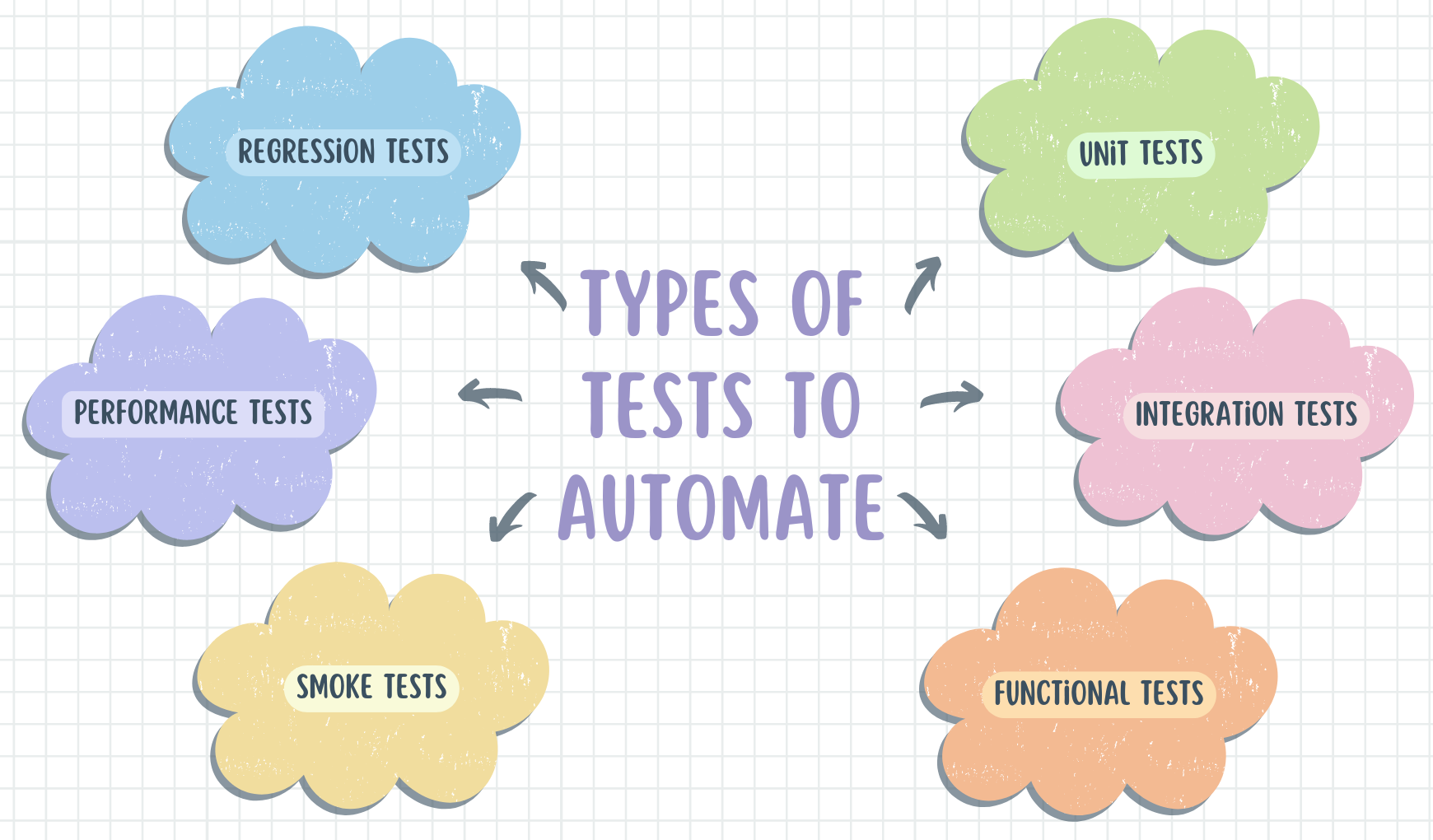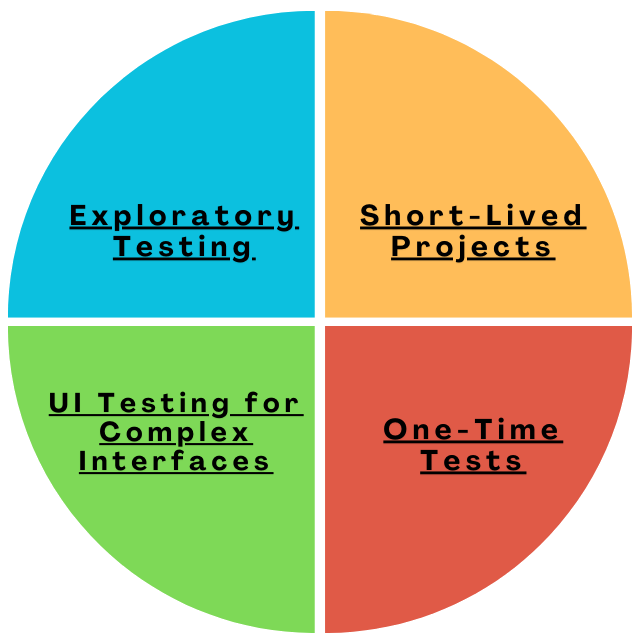Test Automation for Beginners: Where to Start?
|
|
As software projects continue to grow in complexity, automation becomes a core component of software testing strategies. It allows QA teams to execute repetitive tests more efficiently, systematically, and consistently. Still, beginners face the problem of finding a place to start with automation and choosing the right tools to achieve their testing goals effectively.
This article covers the foundational aspects of test automation, including why it’s important, the types of testing types suitable for automation, and a step-by-step guide to help you get started.
What is Test Automation?
Test automation involves using specialized software to drive the execution of tests, inspect actual outcomes against expected results and then report results automatically; this is an essential component in continuous testing today within both Agile and DevOps practices, which allows you to fasten the feedback loops for better quality assurance.
Benefits of Test Automation
- Efficiency: Manual testing is time-consuming and repetitive; by automating it, we can execute more tests in less time.
- Consistency: Automation guarantees that the same tests are run with the same inputs, minimizing human error.
- Reusability: Automated tests can be reused across different builds, reducing the overhead associated with repetitive testing.
- Scalability: As your application grows, so do your test cases. Automation scales easily, allowing you to handle thousands of test cases efficiently. Read more about Test Scalability.
Why is Test Automation Needed?

To appreciate the value of test automation, it’s important to understand the key challenges faced by software testers in manual testing environments:
Repetitive Tasks
Manual testing means that you’re doing the same thing over and over again. You may have to rerun a set of test cases across many software versions, operating systems or devices. Regardless of which platform the tests are run on, doing them lots of times is time-consuming and mistakes creep in easily. Especially in the case of larger projects where this type of work might take hours or even whole days to complete if done manually!
Time Constraints
With development cycles getting shorter and shorter due to agile methodologies and DevOps practices, testing teams are under pressure to verify software quickly. Manual testing often can’t keep up with the pace of rapid software delivery, resulting either in delays to releases or a compromise of quality.
Increased Complexity
Modern software applications are getting more complicated all the time, often incorporating multiple integrations, third-party services and complex user interactions. Manually testing all these scenarios may not only be inefficient but may lead to missed bugs.
Human Error
Humans will always make mistakes. Even highly experienced testers under ideal conditions are prone to error and oversight. When a job is repetitive for a time, there is a high chance that a few critical issues may be missed.
Scalability
Manual testing simply does not scale. As the software expands, so does the number of test cases and test scenarios, and managing a large test suite manually is simply overwhelming. Automation helps reduce this burden by means of parallel execution, running tests across different environments concurrently and at a scale that manual testing cannot achieve.
Types of Tests to Automate

Not all types of testing are suitable for automation. Let’s examine the types of tests that are commonly automated.
Unit Tests
The unit test concentrates on verifying small pieces of code apart, most often functions or procedures that they behave correctly. These tests are typically crafted by developers and allow the logic of each component to be verified.
Integration Tests
Integration tests check how various pieces of software work together. These tests ensure that data flows correctly from one module to another and that subsystem components communicate well with each other. It is very important, for example, to validate APIs, databases and third-party services inside automated integration tests.
Functional Tests
Functional tests are used to determine whether the application does what it is supposed to do, in other words: Correlation. For example, testing whether a login page correctly authenticates users is a functional test. Automating all these types of tests checks that the major functionality gets checked every time code changes are made. Read: Functional Testing Types.
Regression Tests
The main purpose of regression tests is to ensure that new code changes do not break any existing functionality. As applications grow, the importance of regression testing increases, so automation tools become essential. Automated regression tests help out when it comes to running large test suits quickly and in a uniform manner.
Performance Tests
Performance tests measure how the application behaves under a given workload. Automating these tests can simulate the user load on the application, allowing you to identify potential bottlenecks early.
Smoke Tests
Smoke tests are a subset of test cases that validate an application’s most critical functionalities. They are run to ensure that the application is stable enough for more in-depth testing. Automated smoke tests allow development teams to judge stability quickly after a build has been deployed. Know about Smoke Testing vs. Sanity Testing.
When Not to Automate?

While automation brings many benefits, there are cases where it may not be the best solution. Automating the wrong types of tests can lead to wasted time and resources. Here are some cases when automation might not be appropriate:
Exploratory Testing
Exploratory testing involves manually exploring the application to identify bugs or usability issues that are not covered by predefined test cases. Automation is not suitable for exploratory testing because it relies on human intuition and creativity to find unexpected issues. However, you can automate some of the exploratory testing with AI.
Short-Lived Projects
For projects with a very short lifespan, the cost and effort involved in setting up test automation might not be justifiable. In such cases, manual testing may be more cost-effective.
UI Testing for Complex Interfaces
While many UI tests can be automated, some complex interfaces that frequently change (e.g., highly dynamic single-page applications) may require constant maintenance of automated scripts, which can outweigh the benefits of automation. In such situations, you might want to use AI capabilities so that your test scripts adapt to the UI changes. Know here more: Self-healing Tests.
One-Time Tests
If a test scenario is only needed once or very infrequently, it may not be worth the effort to automate it.
Key Factors to Consider When Choosing a Tool
- Ease of Use: Especially for beginners, an easy setup automation tool is the best choice. Generally speaking, A tool that can start working right out of the box, rather than requiring a deep technical understanding from the start, is preferred. Read: Top 7 Automation Testing Tools to Consider.
- Support for Your Application Type: Instead of selecting different tools for web, API, database, mobile automation, etc., the best choice is always one tool that supports most types of testing requirements.
- Integration with CI/CD Pipelines: CI/CD is a critical part of modern software development. The tool you choose should have default integrations with most third-party applications. Otherwise, integrating with other tools requires writing many lines of code, which may be difficult from a beginner’s perspective.
- Minimal Maintenance: Selecting tools with less or zero maintenance is always preferred. Many advanced new-generation tools claim zero maintenance.
How to Choose the Right Test Automation Tool
This is a tough decision for anyone to make because there are so many tools out there, each with its own features. Choosing the right one for beginners can be tricky. Many automation tools rely on programming languages, and one major challenge is that as customer needs change, you might have to write scripts in different languages. For instance, one customer might use Selenium with Java, while another might want Selenium with Python or Node.js. That means you’d have to learn those languages too. As a beginner, learning multiple languages can be hard and overwhelming. Here is an option If you are looking for a stable and powerful Selenium alternative with almost zero maintenance.
Considering all the key factors we discussed above, the better option would be to select an automation tool that supports multiple types of testing and is powered by AI. testRigor is an excellent choice for that.
Let’s see why testRigor is preferred over other tools.
testRigor Features
- Costless Deployment: testRigor is a cloud-hosted tool, so you don’t have to spend your time, effort, and money setting up a huge infrastructure for test automation. You need to subscribe to a suitable plan, and then you can use the tool to create/generate test scripts.
-
English Scripts: With testRigor, you don’t need to depend on any scripting language. testRigor, with its AI capabilities, helps you to create scripts in parsed plain English. The test scripts will be more like application feature statements from a user point of view. Also, testRigor provides other ways of generating test scripts:
- Generative AI: testRigor can generate test cases; you just need to provide a plain English test case description. Here, you can select the number of test cases to be generated by AI.
- Record and playback: This feature works mainly with the Chrome browser. You can record the UI interactions, which testRigor will convert into test scripts.
- Import/copy from test management tools: You can copy/import manual test cases from test management tools such as TestRail, PractiTest, ALM, etc., to run directly as automated tests with testRigor’s AI.
-
No Locators: One of the main reasons traditional automation tools fail to build trust is false positive bugs. Those bugs happen mainly due to a change in the DOM structure. Those tools use the DOM properties of elements to locate them. So, any change in those properties makes the test case fail.testRigor, on the other hand, doesn’t rely on element locators. To be precise, testRigor doesn’t use element locators. You can mention the element name as you see on UI or its position in plain English, and that’s all. testRigor identifies the element and performs the requested action. To know more, you can read this blog: testRigor locators.
- Visual Testing: testRigor helps you execute visual testing on your application. With testRigor, you can compare the screens or elements from the previous execution and check for deviations using ML algorithms. With testRigor’s visual testing, we can ensure all the UI elements are loaded correctly on the page. Know more about visual testing using testRigor.
-
Testing Powerhouse: Another issue with traditional testing is that you may need to maintain multiple testing frameworks for each type of testing, such as mobile, web, and desktop. To save you from this extra work and management, testRigor is here. It supports most of the testing types singlehandedly, so there is no need to create and maintain multiple frameworks.You can perform the below testing types using plain English commands:
- Integrations: testRigor offers built-in integrations with popular CI/CD tools like Jenkins and CircleCI, test management systems like Zephyr and TestRail, defect tracking solutions like Jira and Pivotal Tracker, infrastructure providers like AWS and Azure, and communication tools like Slack and Microsoft Teams.
- Less Maintenance: testRigor reduces maintenance effort by providing multiple options to make the scripting easy and robust. testRigor claims a 99.5% decrease in test maintanance when compared to other tools.
Best Practices for Test Automation
To ensure success in test automation, here are some best practices to follow:
Start Small and Scale
Don’t try to automate everything at once. Start with a small number of critical tests and gradually expand your automation suite as your confidence and expertise grow.
Keep Tests Independent
Each automated test should be independent of others. This ensures that a failure in one test doesn’t affect the outcome of others, making it easier to identify the root cause of issues.
Focus on Test Coverage
While automation can improve efficiency, it’s important to focus on test coverage. Make sure your automated tests cover all critical functionalities and edge cases. Know more about What is Test Coverage?
Use Data-Driven Testing
Data-driven testing allows you to run the same test with different input values. This approach reduces code duplication and increases the flexibility of your tests.
Regularly Review Test Results
Automation doesn’t mean you can set it and forget it. Regularly review test results to identify patterns in failures and maintain the quality of your automated tests.
Here is a Test Automation Playbook to get you started.
Conclusion
Test automation is powerful and can significantly improve the efficiency and reliability of your software testing efforts. For beginners, choosing the right tool is crucial, and testRigor’s no-code approach, minimal maintenance, and AI-driven features make it an excellent choice for those new to test automation.
By focusing on core functionalities like web, mobile, and API testing, testRigor enables seamless automation while reducing the burden of test maintenance. As beginners build their automation skills, testRigor offers scalability and flexibility, making it an ideal choice for long-term automation success.
| Achieve More Than 90% Test Automation | |
| Step by Step Walkthroughs and Help | |
| 14 Day Free Trial, Cancel Anytime |












